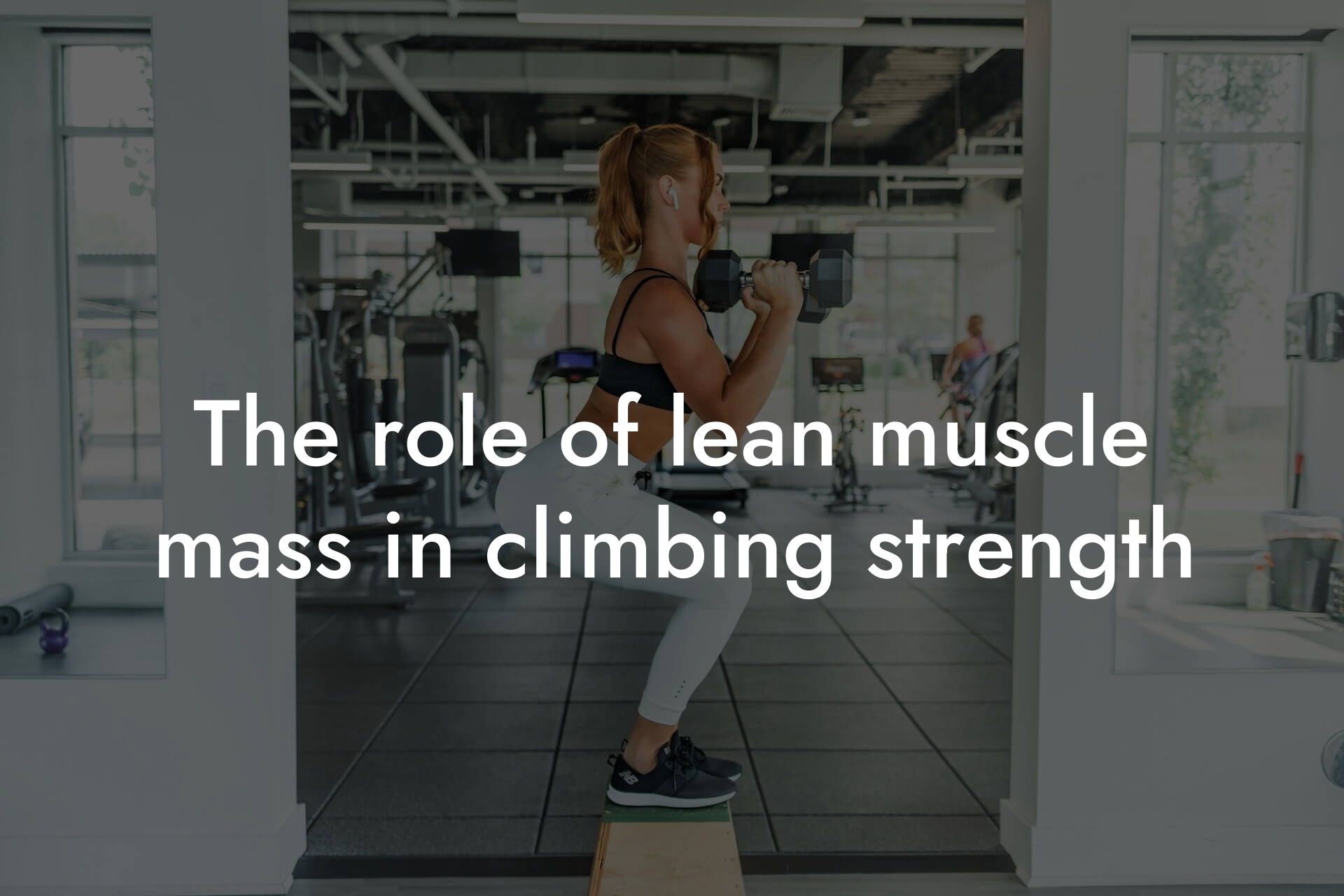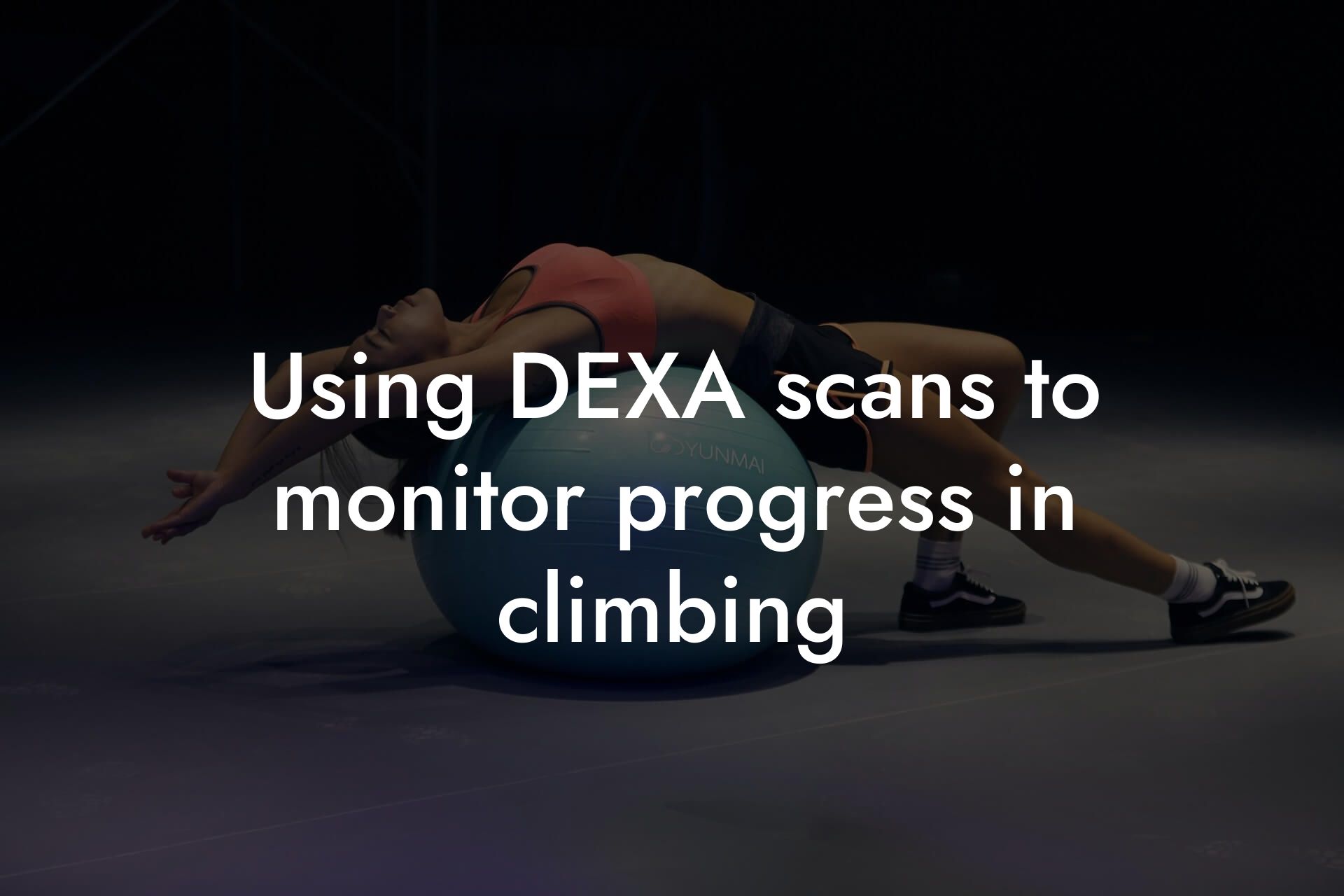As a climber, you're no stranger to the physical demands of the sport. From gripping holds to supporting your body weight, climbing requires a unique combination of strength, endurance, and agility. However, the repetitive strain and high-impact nature of climbing can also take a toll on your bones, increasing the risk of injuries and long-term damage. In this article, we'll delve into the importance of bone density in climbing, the risks of injury, and provide practical tips on how to prevent them.
Table of Contents
The Importance of Bone Density in Climbing
Bone density refers to the amount of minerals, such as calcium and phosphorus, present in your bones. Having strong, dense bones is crucial for climbers, as it helps to absorb the impact and stress of climbing movements. When you have low bone density, your bones are more susceptible to fractures and injuries, which can be devastating for climbers.
Research has shown that climbers are at a higher risk of developing osteoporosis, a condition characterized by brittle and porous bones. This is due to the repetitive strain and impact of climbing, which can cause micro-fractures and bone loss over time. Furthermore, climbers who are underweight or have a history of eating disorders are at an even higher risk of developing osteoporosis.
Risks of Injury in Climbing
Climbing injuries can be broadly categorized into two types: acute and chronic. Acute injuries occur suddenly, often as a result of a fall or overexertion. Chronic injuries, on the other hand, develop over time, often due to repetitive strain and poor training habits.
Common climbing injuries include:
- Finger injuries, such as pulley ruptures and tendonitis
- Wrist and forearm injuries, such as sprains and strains
- Elbow injuries, such as tennis elbow and golfer's elbow
- Shoulder injuries, such as rotator cuff strains and dislocations
- Back injuries, such as herniated discs and spinal fractures
Factors Affecting Bone Density in Climbers
Several factors can affect bone density in climbers, including:
- Age: Bone density naturally decreases with age, making older climbers more susceptible to injuries.
- Genetics: Family history and genetic predisposition can affect bone density.
- Nutrition: A diet lacking in calcium and vitamin D can contribute to low bone density.
- Training habits: Poor training habits, such as overtraining and inadequate recovery, can lead to bone loss.
- Body composition: Climbers who are underweight or have a high percentage of body fat may be at a higher risk of developing osteoporosis.
Assessing Bone Density
At Tano Performance Group, we use Dual-Energy X-ray Absorptiometry (DEXA) scans to assess bone density in climbers. DEXA scans are a non-invasive and highly accurate way to measure bone density, providing valuable insights into your bone health.
Our comprehensive body assessment includes a DEXA scan, which provides a detailed report on your bone density, body composition, and other key health metrics. This information can be used to identify areas for improvement and develop a personalized training and nutrition plan to optimize your bone health.
Preventing Injuries in Climbing
Preventing injuries in climbing requires a multifaceted approach that incorporates proper training habits, nutrition, and recovery strategies. Here are some practical tips to help you prevent injuries and maintain strong, healthy bones:
- Warm up and cool down: Always warm up before climbing and cool down afterwards to prevent muscle imbalances and reduce the risk of injury.
- Train smart: Avoid overtraining and incorporate rest days into your training schedule to allow your bones to recover.
- Focus on technique: Good technique can help reduce the impact and stress on your bones, reducing the risk of injury.
- Strengthen your core: A strong core can help stabilize your body and reduce the risk of injury.
- Eat a balanced diet: A diet rich in calcium, vitamin D, and other essential nutrients can help support bone health.
- Get enough sleep: Adequate sleep is essential for bone recovery and growth.
Bone density and injury prevention are critical components of climbing performance. By understanding the risks of injury and taking proactive steps to maintain strong, healthy bones, you can optimize your climbing performance and reduce the risk of injury. At Tano Performance Group, we're committed to helping climbers achieve their goals through comprehensive body assessments and personalized training and nutrition plans.
Remember, prevention is key. By incorporating the tips and strategies outlined in this article into your training routine, you can maintain strong, healthy bones and continue to climb at your best.
Take the First Step Towards Optimal Bone Health
Ready to take your climbing performance to the next level? Contact us today to schedule a comprehensive body assessment and start optimizing your bone health.
Frequently Asked Questions
What is bone density and why is it important for climbers?
Bone density refers to the amount of minerals, such as calcium and phosphorus, present in your bones. It's a crucial aspect of overall health, especially for climbers, as it directly affects the risk of injuries and fractures. Climbers are at a higher risk of osteoporosis, a condition characterized by brittle and porous bones, due to the repetitive stress and impact on their bones.
How does climbing affect bone density?
Climbing can have both positive and negative effects on bone density. On the one hand, the weight-bearing and resistance exercises involved in climbing can help stimulate bone growth and increase density. On the other hand, the repetitive stress and impact on joints, particularly in the hands, wrists, and ankles, can lead to bone loss and decreased density if not managed properly.
What are the risks of low bone density for climbers?
Low bone density can increase the risk of injuries and fractures, particularly in the hands, wrists, and ankles, which are common areas of impact in climbing. This can lead to prolonged recovery periods, reduced performance, and even long-term damage to joints and bones.
How can I improve my bone density as a climber?
There are several ways to improve bone density as a climber. These include incorporating weight-bearing and resistance exercises into your training routine, maintaining a balanced diet rich in calcium and vitamin D, getting regular exercise, and managing stress and impact on your joints.
What role does nutrition play in bone density?
Nutrition plays a critical role in maintaining healthy bone density. A diet rich in calcium, vitamin D, and other essential nutrients can help support bone growth and density. Climbers should aim to consume foods high in calcium, such as dairy products, leafy greens, and fortified cereals, and ensure adequate vitamin D levels through sun exposure, supplements, or fortified foods.
How does vitamin D impact bone density?
Vitamin D is essential for calcium absorption and bone growth. Deficiencies in vitamin D have been linked to increased risk of osteoporosis and fractures. Climbers should ensure adequate vitamin D levels through sun exposure, supplements, or fortified foods, particularly during periods of reduced sun exposure.
What exercises can I do to improve bone density?
In addition to climbing, incorporating exercises that target the hands, wrists, and ankles, such as grip strengthening, wrist curls, and ankle weights, can help improve bone density. Weight-bearing exercises, such as squats, lunges, and deadlifts, can also help stimulate bone growth and density.
How often should I exercise to improve bone density?
Aim to exercise regularly, ideally 2-3 times per week, with a focus on weight-bearing and resistance exercises. Consistency is key, as regular exercise can help stimulate bone growth and density over time.
Can I improve bone density at any age?
Yes, it's never too late to improve bone density. While peak bone mass is typically reached in early adulthood, regular exercise and a balanced diet can help maintain or even increase bone density at any age.
How does stress impact bone density?
Chronic stress can negatively impact bone density by increasing the production of cortisol, a hormone that can interfere with bone growth and density. Climbers should prioritize stress management techniques, such as meditation, yoga, or deep breathing exercises, to reduce the impact of stress on their bones.
What are some common injuries associated with low bone density in climbers?
Common injuries associated with low bone density in climbers include wrist and ankle fractures, finger injuries, and stress fractures in the hands and feet.
How can I prevent injuries associated with low bone density?
Preventing injuries associated with low bone density requires a multifaceted approach. This includes incorporating exercises that target the hands, wrists, and ankles, maintaining a balanced diet, managing stress, and taking regular breaks to rest and recover.
What are some warning signs of low bone density?
Warning signs of low bone density may include frequent injuries or fractures, particularly in the hands, wrists, and ankles, as well as chronic pain or weakness in these areas.
How is bone density measured?
Bone density is typically measured using a dual-energy X-ray absorptiometry (DXA) scan, which compares your bone density to that of a healthy adult of the same age and sex.
What is a normal bone density range for climbers?
A normal bone density range for climbers varies depending on age, sex, and other factors. Generally, a T-score of -1 to +1 is considered normal, while a T-score of -2.5 or lower indicates osteoporosis.
Can I still climb with low bone density?
While it's possible to climb with low bone density, it's essential to take precautions to minimize the risk of injury. This may include modifying your climbing technique, incorporating exercises to improve bone density, and taking regular breaks to rest and recover.
How can I modify my climbing technique to reduce the risk of injury?
Modifying your climbing technique to reduce the risk of injury may include using proper footwork, maintaining a strong core, and avoiding excessive stress on your joints. It's also essential to listen to your body and take regular breaks to rest and recover.
What role does rest and recovery play in bone density?
Rest and recovery play a critical role in bone density by allowing your bones to repair and rebuild. Climbers should prioritize rest and recovery, including getting adequate sleep, taking regular breaks, and incorporating stretching and foam rolling into their routine.
Can I use supplements to improve bone density?
While supplements can be beneficial, it's essential to consult with a healthcare professional before adding any supplements to your routine. Calcium and vitamin D supplements may be beneficial, but it's crucial to ensure you're getting adequate nutrients through your diet and sun exposure first.
How can I monitor my bone density as a climber?
Monitoring your bone density as a climber involves regular check-ups with a healthcare professional, tracking your nutrition and exercise routine, and being aware of any changes in your body, such as frequent injuries or chronic pain.
What are some common misconceptions about bone density and climbing?
Common misconceptions about bone density and climbing include the idea that bone density is only a concern for older climbers or that it's not possible to improve bone density. However, bone density is a critical aspect of overall health for climbers of all ages and can be improved with proper nutrition, exercise, and stress management.
Here are some related articles you might love...
- The role of lean muscle mass in climbing strength
- Using DEXA scans to monitor progress in climbing
- The impact of body composition on climbing performance
- Nutrition strategies for sustained energy during climbs
- Off-season training strategies for climbers
- Balancing strength, endurance, and flexibility in climbing
- Recovery techniques for climbers after intense sessions
- Strength training programs for amateur climbers
- Reducing body fat for better climbing efficiency
Zak Faulkner
Zak Faulkner is a leading authority in the realm of physical health and body composition analysis, with over 15 years of experience helping professionals optimise their fitness and well-being. As one the experts behind Tano Performance Group, Zak has dedicated his career to providing in-depth, science-backed insights that empower clients to elevate their physical performance and overall health.
With extensive knowledge of DEXA technology, Zak specializes in delivering comprehensive body assessments that offer precise data on body fat, muscle mass, bone density, and overall physique. His expertise enables individuals to make informed decisions and achieve their fitness goals with accuracy and confidence. Zak’s approach is rooted in a deep understanding of human physiology, combined with a passion for helping clients unlock their full potential through personalised strategies.
Over the years, Zak has earned a reputation for his commitment to excellence, precision, and client-focused service. His guidance is trusted by top professionals who demand the best when it comes to their health. Whether advising on fitness programs, nutritional strategies, or long-term wellness plans, Zak Faulkner’s insights are a valuable resource for anyone serious about taking their health and fitness to the next level.
At Tano Performance Group, Zak continues to lead our Content Team revolutionising how professionals approach their physical health, offering unparalleled expertise that drives real results.




